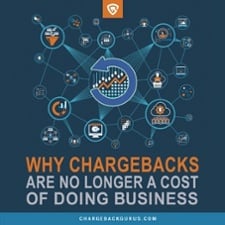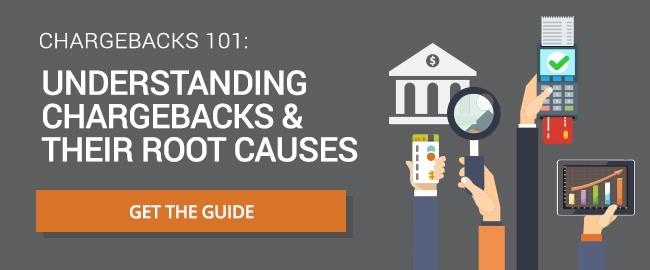How to Reduce Credit Card Decline Rates
Table of Contents
- What is a credit card decline rate?
- How can I lower decline rates?
- A word of caution for subscription merchants
- Optimizing your subscription business
- How many recurring payments are declined?
- Can a merchant stop a card from being declined?
- Can I reduce decline rates?
It’s no surprise that the subscription business model has taken hold with so many eCommerce merchants. In theory, it’s an ideal system: Once you convert a lead into a customer, all you have to do is keep giving them what they signed up for and they’ll reliably generate revenue for you every month.
The unfortunate reality is that even payments from satisfied customers can vanish unexpectedly due to credit card declines, and getting them to update their payment credentials can be as challenging as converting them in the first place. What can merchants do to reduce credit card decline rates?
The first thing to bear in mind is that this is an extremely common problem for merchants who deal in recurring billing and subscription-based payment models. According to Visa and Mastercard, an average of 15% of recurring payments are declined, but for some industries, the rate can be double that.
 Sometimes this is because cardholders have maxed out their credit limit, but it’s also common for cards to be declined because payment credentials have changed, and not just the expiration dates — 30% of credit cards are reissued every year, frequently because of fraud and data theft.
Sometimes this is because cardholders have maxed out their credit limit, but it’s also common for cards to be declined because payment credentials have changed, and not just the expiration dates — 30% of credit cards are reissued every year, frequently because of fraud and data theft.
What’s especially frustrating for merchants is that many customers seem to regard a declined subscription payment as a sign from the universe that it’s time to let that subscription lapse, anyway — the success rate for updating a card after its first decline is about 5%.
To some extent, losing subscribers in this way comes with the territory of being a subscription-based business, but that’s no reason to passively accept rising decline rates without fighting to keep your subscribers. Let's talk about decline rates and what subscription merchants can do to keep their customers on board.
What is a credit card decline rate?
Declines are relatively common and in many ways out of the merchant's control. There's not much your average merchant can do to prevent customers from forgetting what their current balance is, and for most merchants, a decline is no big deal. The customer can simply use another payment method to make their purchase.
For merchants who use recurring billing, however, declines are far more serious. As we mentioned earlier, customers who have a recurring transaction declined are highly unlikely to update their accounts with new payment information.
Subscription merchants should calculate and track their decline rate, since almost every one of those declines represents lost revenue.
Of course, tracking your decline rate won't do much good if there's no way to influence it. Fortunately, there are a few things merchants can do to prevent declined transactions and lower their rates.
How can I lower decline rates?
- Insufficient funds
- Card expired
- Invalid card number
- Invalid CVV
- Activity limit exceeded
Note that there are “hard” declines and “soft” declines. A hard decline means the transaction shouldn't be attempted again, and doing so even has the potential to land a merchant in hot water.
Soft declines, on the other hand, aren't necessarily final — you may be able to resubmit the charge and have it go through successfully. You don’t always want to automatically resubmit soft declines, but we’ll come back to that in a moment. First, here are our recommended methods of reducing decline rates.
Account updater programs
Visa and Mastercard allow merchants to enroll in programs that obtain updated card information from issuing banks and automatically update your payment gateway with new expiration dates, billing addresses, and even account numbers. The new payment credentials will not necessarily be provided in full to the merchant, but the automatic payments will be able to continue without interruption.
Recurring billing indicator
The use of indicators that identify recurring billing payments can prevent erroneous declines and expedite the resolution of problems with payment processors and issuing banks. Check with your payment gateway provider to see if this feature is available to you. If so, you should include the indicator with every recurring transaction you process.
Proactive customer outreach
 Reaching out to customers for up-to-date payment credentials after a decline has occurred can be a hit-or-miss prospect. You can improve your chances of getting an update by reaching out before the decline occurs. You can do this by running a query in your CRM that identifies credit card expiration dates that are coming up in the near future, then contacting the cardholders to let them know that their subscriptions will lapse if they don’t update their credit card information.
Reaching out to customers for up-to-date payment credentials after a decline has occurred can be a hit-or-miss prospect. You can improve your chances of getting an update by reaching out before the decline occurs. You can do this by running a query in your CRM that identifies credit card expiration dates that are coming up in the near future, then contacting the cardholders to let them know that their subscriptions will lapse if they don’t update their credit card information.
Of course, you’ll still want to reach out to customers after their charges get declined, too. Make it fast, easy, and simple to update their information, remind them why they subscribed and what they’ll be missing out on, and throw in some incentives if you can — it’s always better to keep an existing customer than to have to go out and try to acquire a replacement!
Offer automated clearing house payments
These days, many customers prefer to use their checking accounts to make ACH payments online. Merchants have good reason to like ACH, too — the processing fees are lower, and ACH transactions are far less likely to be declined than credit cards.
If you do decide to offer ACH payments, make sure your billing practices are bulletproof. You definitely don't want any duplicate transactions or mistakes in the transaction amount, since that can result in overdraft or NSF fees for your customer, who probably won't be very happy with your mistake.
While notifying your customer of exactly when each recurring charge is going to be processed a few days in advance is good practice in general, these fees make it even more important for ACH transactions.
Resubmit (carefully)
Many “soft” decline codes can be resubmitted, and may go through successfully. A decline due to insufficient funds, for example, may be a temporary thing if it’s just a matter of the cardholder not realizing they're near their limit. Network issues can cause declines, too. Just be cautious about this practice — card networks may restrict you from retrying too frequently. When in doubt, consult with your payment gateway provider.
A word of caution for subscription merchants
One thing we would advise against is using payment processing services that bypass normal authorization procedures to “force” a transaction to go through. These services can be effective at completing troublesome transactions and customers may not care or notice, but this method exposes you to the risk of chargebacks that you will be in no position to dispute.
Losing a customer for avoidable reasons is disappointing, but is it worth the danger of increasing your chargeback rate and becoming categorized as a “high-risk” merchant? We don’t believe so.
Optimizing your subscription business
Subscription-based business models offer many benefits and advantages for merchants, but they come with their own set of challenges that must be understood and handled properly if you want your enterprise to grow and thrive.
Just because your income comes from so-called passive revenue streams doesn’t mean you can take a passive approach toward managing billing processes and customer retention.
Preventing avoidable credit card declines is just one aspect of optimizing a subscription-based business.
You also have to take into account the fact that customers can be fickle and forgetful when it comes to the subscriptions they’ve signed up for, and pursuing an excessively aggressive strategy of retrying declined cards can come back to bite you in the form of chargebacks. Clear and transparent communication with your customers should always be at the forefront of your business practices.
FAQ
How many recurring payments are declined?
Can a merchant stop a card from being declined?
Can I reduce decline rates?
Thanks for following the Chargeback Gurus blog. Feel free to submit topic suggestions, questions or requests for advice to: win@chargebackgurus.com



